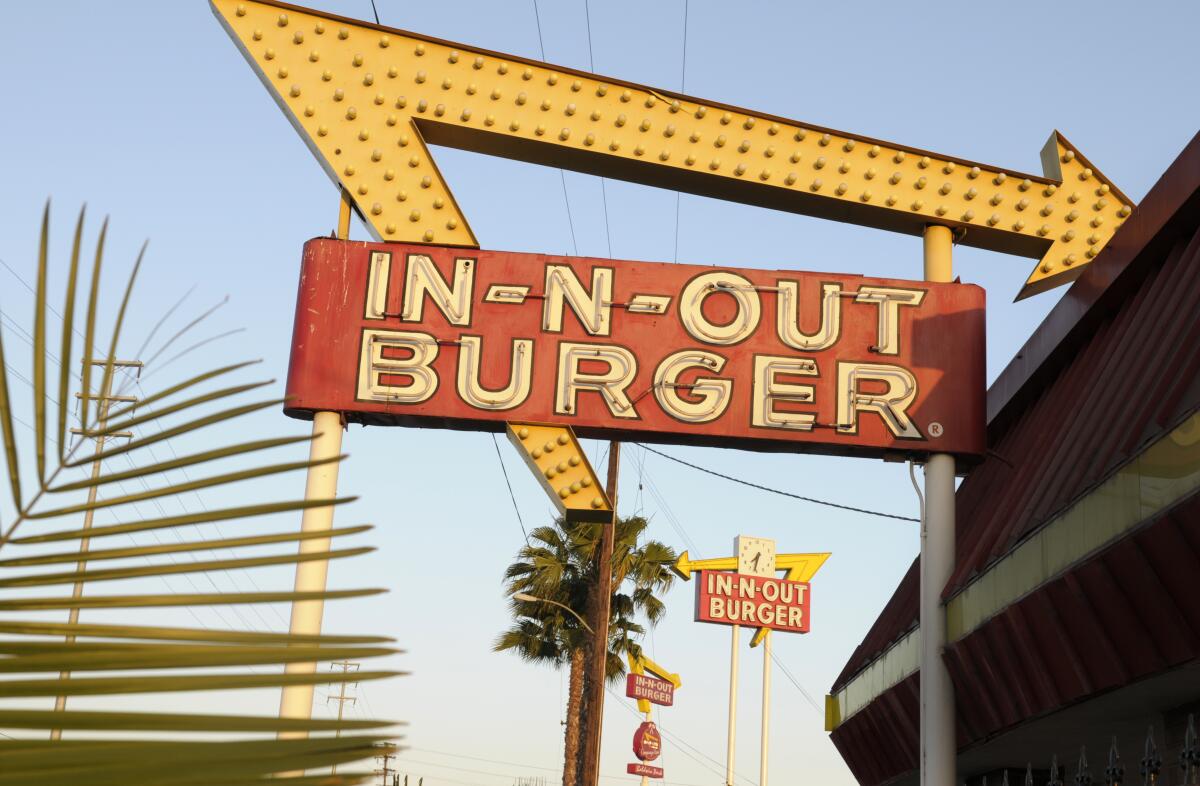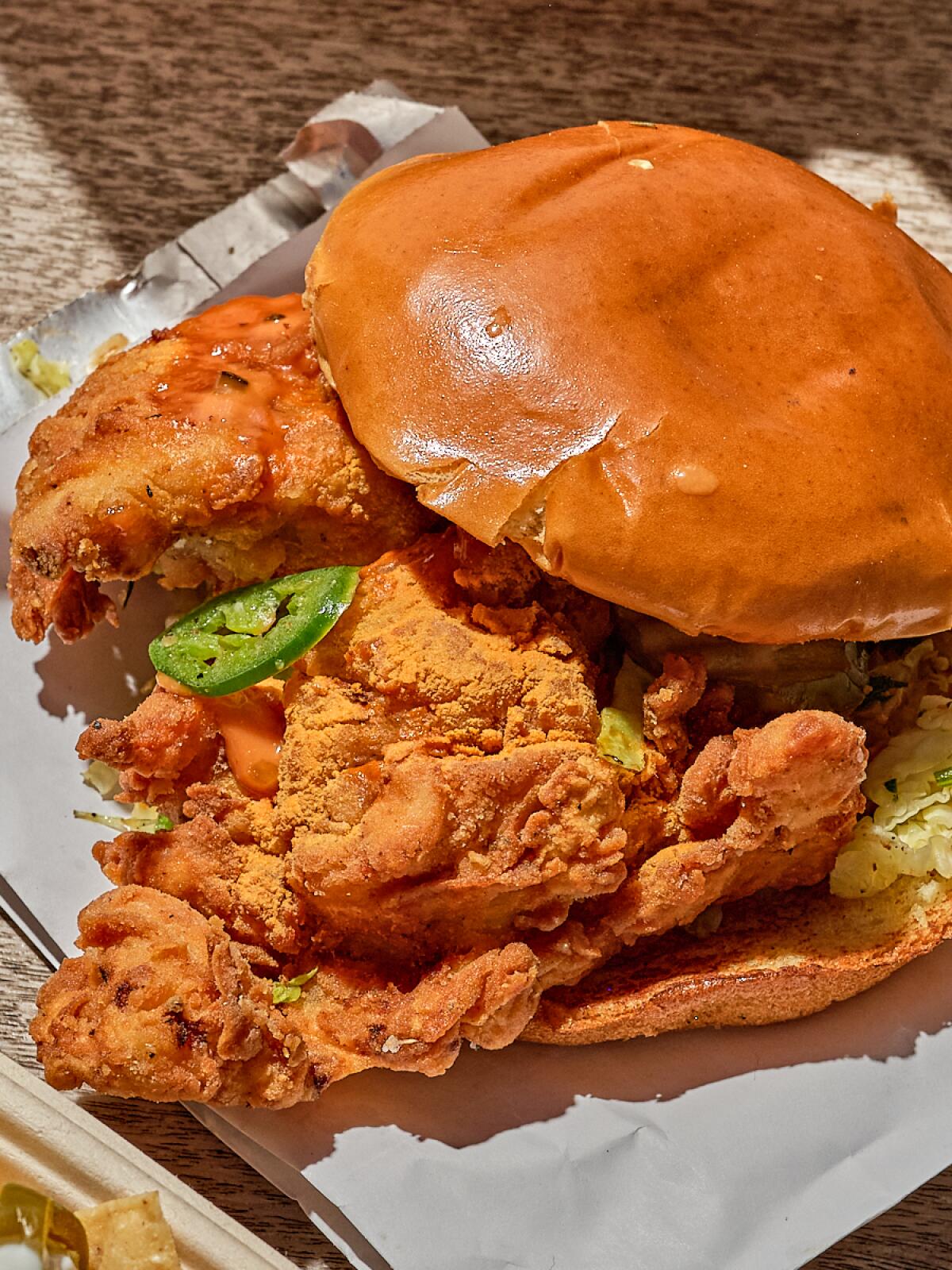A journey to discover the rich traditions of Día de los Muertos

- Share via
A few weeks ago, Steve Padilla, a longtime friend and senior editor at The Times, and I were chatting about Día de los Muertos, or Day of the Dead. He suggested the holiday and its rich traditions would be a “good topic for Food.”
I pounced. “How can I convince YOU to write that story,” I asked — again and again.
First, he explained that his family had never really observed the holiday. Three of his grandparents were born in Mexico, and Spanish was the first language of his U.S.-born parents, but “the holiday didn’t take hold here like traditions surrounding Christmas or New Year’s. Our family was too citified to appreciate the Indigenous elements of the holiday.”
But things are different this year.
After losing his parents and older brother in a 10-month period, Steve “decided to get a bit closer to this tradition — and understand it — through its foods.” And he graciously agreed to write about his journey for us.
Enjoying this newsletter? Consider subscribing to the Los Angeles Times
Your support helps us deliver the news that matters most. Become a subscriber.
As he looked at loaves of pan de muerto, the “bread of the dead” central to Día de los Muertos, Steve said his mind was flooded with questions. Do the strips of dough forming a cross, on so many of the round loaves, represent bones? The four directions? A Christian cross? What role does food play in the tradition of ofrendas, displays decorated with flowers, candles and photographs of the deceased?
“The answers,” he writes, “say much about the nature and origins of this most Mexican of holidays, an observance that blends pre-Hispanic culture with beliefs brought by the Spaniards when they conquered Mexico half a millennium ago. They also show how food — whether pan de muerto, tamales, tequila or maybe even a can of Sprite — plays a central role in welcoming the spirits said to return to earth the first two days of November.”
Eat your way across L.A.
Get our weekly Tasting Notes newsletter for reviews, news and more.
You may occasionally receive promotional content from the Los Angeles Times.
Have a question?
Other stories
— If you’re a fan of the double-double animal-style cheeseburger, you probably are aware that In-N-Out Burger is feuding with California health officials over COVID-19 regulations. Earlier this month, San Francisco’s only In-N-Out had to close temporarily after “violating a local rule requiring proof of vaccination for indoor customers,” Times reporter Gregory Yee reported earlier this week. And the company has closed all five of its dining rooms in Contra Costa County rather than comply with local health mandates.
In-N-Out officials, Gregory notes, have pushed back, “arguing that asking private businesses to enforce rules requiring proof of vaccination amounts to government overreach.”

So, what about the customers? Devotees are legendary, and Times columnist Gustavo Arellano, who is not shy about saying In-N-Out is overrated, admits “legions of devoted fans” believe he’s a heretic.
Could anything dissuade them? Arellano thinks it’s possible. “If In-N-Out continues to issue strident press releases about government overreach seemingly cribbed from a Tucker Carlson tirade,” he writes, “maybe Californians will be convinced to drop our collective delusions once and for all.”
— Hamburgers aren’t the only fast food with a large fan base. Stephanie Breijo reports that one of L.A.’s most iconic hot dog brands, Tail o’ the Pup, is scheduled to return to the Los Angeles area next year, “along with its hot-dog-shaped food stand,” first unveiled in 1946. (Stephanie also has news about a Cracker Barrel Kitchen that has opened in the area.)

— Coming Sunday: Jean Trinh writes about adult children who open restaurants — among them, Woon, ixlb Dim Sum Eats and Sazón — for their parents. Their stories, Jean writes, “have a series of common themes: immigration, resilience and a second chance at starting something new with family.”
And, in another entry in her Stadium Eats series, Jenn Harris revisits Staples Center to assess the arena food. Here’s a preview: Staples Center has its own signature cocktail, which changes with the sports season. “The current libation is called the California Poppy, and it’s the color of a Hawaiian sunset,” she writes. “It will make you feel like fleeing the concrete jungle and seeking refuge on a tropical beach somewhere.”
Sign me up.
Eat your way across L.A.
Get our weekly Tasting Notes newsletter for reviews, news and more.
You may occasionally receive promotional content from the Los Angeles Times.




